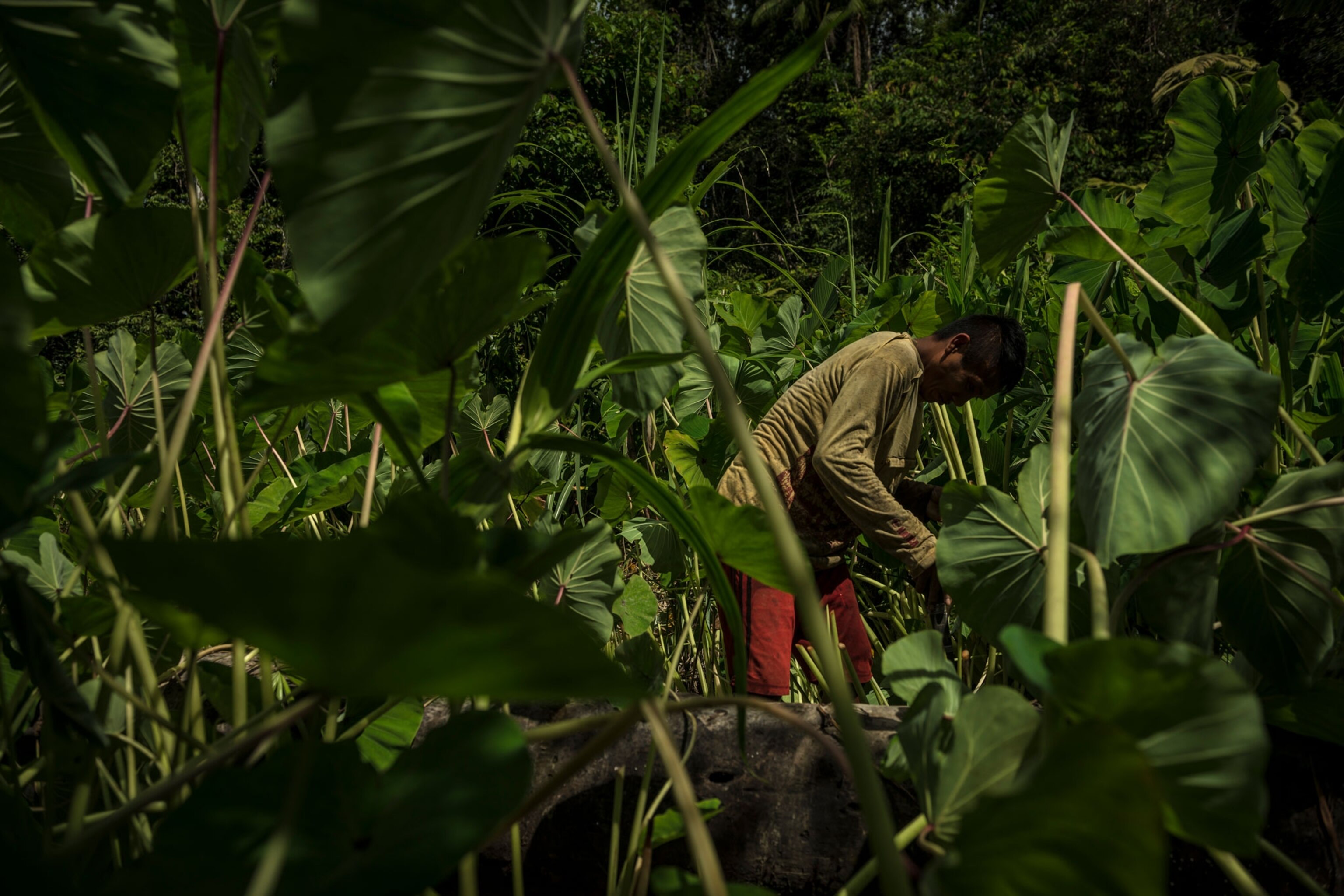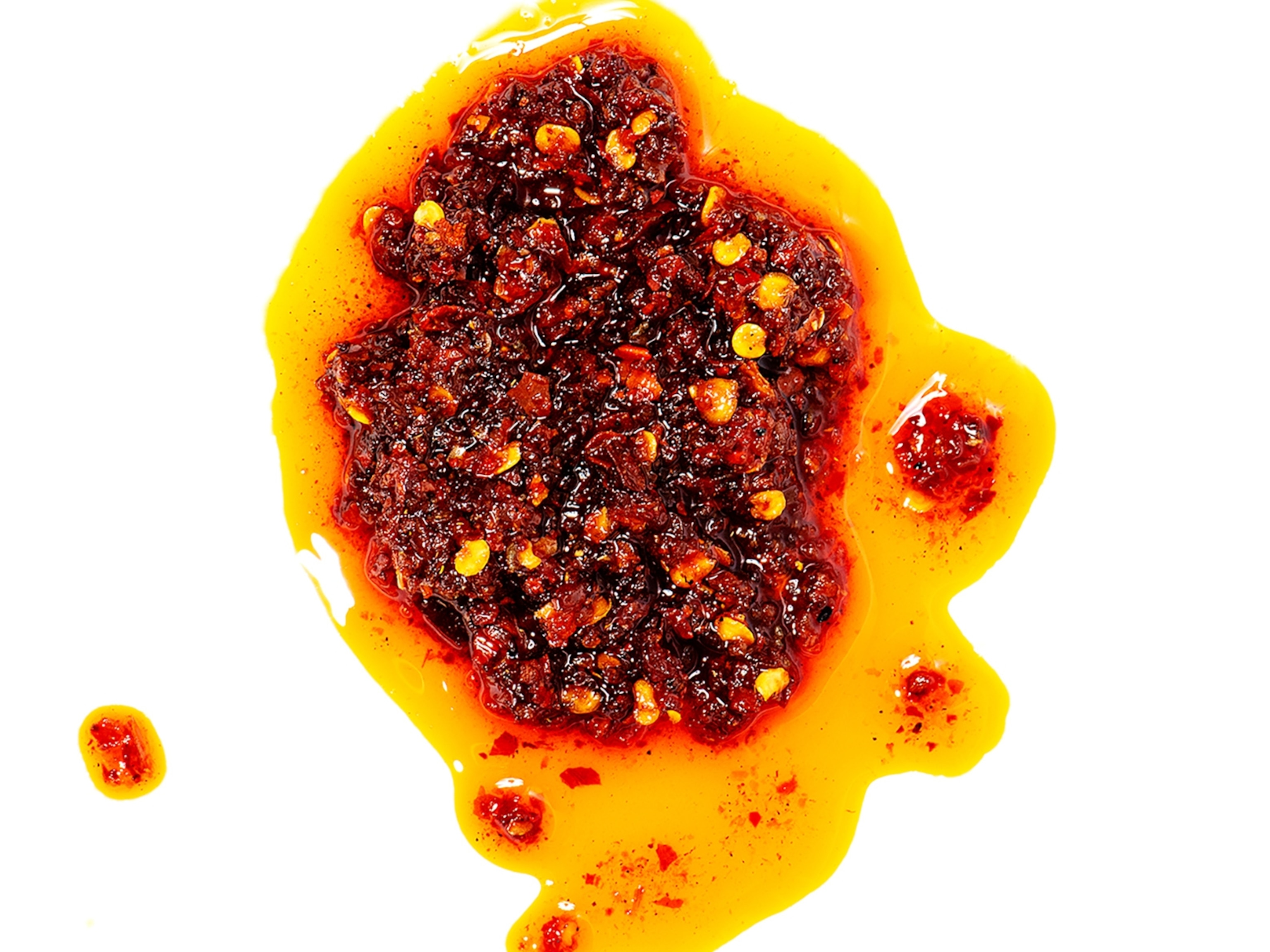
How taro is eaten around the world
The root vegetable is one of the world’s oldest cultivated food plants—and parts of it can actually be poisonous if eaten raw. Here’s how it’s prepared from South Africa to the Pacific Islands.
Taro is a starchy root vegetable that’s beloved by people all over the world, from the Caribbean Islands to West Africa, Greece, Egypt, India, east Asia and the Pacific Islands.
Many researchers believe taro came from Asia and spread throughout the world thanks to immigration, climate shifts, and cultural knowledge transfer. Here’s how taro is enjoyed around the world.
What is Taro?
Taro (Colocasia esculenta) is part of a family of plants with edible underground stems, known as corms. There are a number of different varieties of taro around the world, with each with their own taste, textures, and color profiles.

According to Peter Joseph Matthews, who has dedicated his career to studying the plant’s origins, taro is likely to be one of the oldest cultivated food plants of humankind. Matthews is a professor at the National Museum of Ethnology in Osaka, Japan, and has studied taro in Australia, New Zealand, Japan, Papua New Guinea, and southeast Asia. “Taro is really a transnational crop,” he says.
Taro grows along riversides and thrives in fresh running water in tropical areas of the world. It has characteristically deep green leaves shaped like elephant ears, and long stems that terminate in a corm or bulb, which grows mostly beneath the soil. It tends to be hardy in very wet, hot, and humid conditions and highly responsive to fertilizer, according to Matthews.
Though taro is considered to be a “root” vegetable, humans can also consume the leaves and stems when prepared correctly.
Taro roots and leaves are poisonous when eaten raw because they contain calcium oxalate. Some taro varieties produce a slime that can cause irritation (usually itchiness when peeling). These issues are neutralized through cooking.
Most cultures use taro as an accompaniment or foundation for proteins. The taro corm is commonly peeled, then boiled, baked, fried, or mashed. It’s frequently served with fish or coconut milk, and can be either part of a main dish or a dessert.
Taro is high in fiber, potassium, magnesium, and vitamins C and E. Studies have shown that taro may also have anti-cancer properties and help people manage their blood sugar and weight.
Taro in the Pacific
Taro cultivation can be back-breaking work, according to Honolulu Community College associate professor Mark Sung (Alapaki) Luke. He has been a taro subsistence farmer since he was a teenager, and currently maintains a small, two-acre taro field on the island of Oahu in Hawaii. Annually, he yields around 700 to 1000 pounds of taro, or kalo, which he uses to feed his ohana (community).
This is a tradition that extends a millennium on the islands—the Native Hawaiian creation myth even centers around the plant. Legend has it that Sky Father and his daughter, Ho‘ohokukalani, had a stillborn child. Nine months after the stillborn child was buried, a kalo plant sprouted in its place. The deities later had a second child who became the first Hawaiian chief and the ancestor to all Hawaiians.
In Hawaii, the corm is washed, peeled, then boiled until it's very soft, and mashed. Water is added, and it becomes poi, which is served with proteins like pork or fish. Luke notes that in areas around Polynesia and Oceania, other cultures often boil and then slice the taro root to eat.
In the Philippines, taro is known as gabi and has a similar mythology around it. The story goes that a peaceful man named Gabino protected the women and children left behind when his father and the men of his village went to war. When the village was attacked, Gabino fought valiantly but died in battle. When his father returned to the village, he buried Gabino with his shield and sword, and a taro plant grew over his grave with wide shield-shaped leaves. He named the plant gabi after his son.
In the Philippines, taro is used to make up everything from stews to desserts. Laing is a spicy, creamy stew made from the leaves of the plant, coconut milk, chili, and pork or shrimp. Halaya is a creamy and sweet taro jam. You can also find taro ice cream. In Fiji, they celebrate Taro Day on the first full moon of May. Fijians also make stews from taro leaves, fried taro root, and coconut-sweetened taro root.
Taro in the Americas: Caribbean and South America
In the Caribbean, taro is known as dasheen. Dasheen is not native to the islands but was brought to places like Tobago, Trinidad, and Dominica in the 16th century as a result of the slave trade. In Tobago, the Blue Food Festival (some of the varieties in the area turn blue once cooked) is dedicated to the root vegetable and takes place in October each year.
In Tobago, Trinidad, and Dominica, dasheen is commonly served in a national dish called callaloo, a stew made from the leaves of the taro plant and traditionally served with crabs, though it is also served with chicken or salted pork.
In South America, there are a number of root vegetables that are frequently used interchangeably with taro. These include malanga (Xanthosoma sagittifolium), which can also be referred to as arrowleaf elephant ear, coco, inhame, cará, or cocoyam. Eddoe (Colocasia antiquorum) is also frequently referred to as taro and used in dishes like the Surinamese national dish pom, a casserole served during celebrations.
Taro in Africa
Taro has a plethora of names throughout the continent, including amadumbe, mufhongwe, and madumbis. According to the Slow Food Foundation for Biodiversity, the Zulu people adopted taro as an alternative to yams. Taro was also incorporated into African diets by the Indian community of Kwa-Zulu Natal, who are descendants of slaves and indentured workers who came from India in the 1860s to work the sugar cane farms.
The corms and leaves are commonly cooked and eaten in curries, stews, or soups in regions across Africa. A common form is called palaver sauce, in which the leaves of the taro plant are cooked with fish or meat, into a thick green stew. Sometimes the leaves are boiled and served like spinach. Puri Patta is a common South African dish that consists of taro leaves layered with a chili-spiced batter and then rolled, steamed, sliced, and served in pancakes.
Taro has taken center stage in recent years, Matthews says. It’s thanks to a growing interest in the nutritional value of the root vegetable, an increased interest in food and cultural exploration, and increasing immigration, which cross-pollinates new cultures and food interests.
Related Topics
You May Also Like
Go Further
Animals
- How can we protect grizzlies from their biggest threat—trains?How can we protect grizzlies from their biggest threat—trains?
- This ‘saber-toothed’ salmon wasn’t quite what we thoughtThis ‘saber-toothed’ salmon wasn’t quite what we thought
- Why this rhino-zebra friendship makes perfect senseWhy this rhino-zebra friendship makes perfect sense
- When did bioluminescence evolve? It’s older than we thought.When did bioluminescence evolve? It’s older than we thought.
- Soy, skim … spider. Are any of these technically milk?Soy, skim … spider. Are any of these technically milk?
Environment
- Are the Great Lakes the key to solving America’s emissions conundrum?Are the Great Lakes the key to solving America’s emissions conundrum?
- The world’s historic sites face climate change. Can Petra lead the way?The world’s historic sites face climate change. Can Petra lead the way?
- This pristine piece of the Amazon shows nature’s resilienceThis pristine piece of the Amazon shows nature’s resilience
- Listen to 30 years of climate change transformed into haunting musicListen to 30 years of climate change transformed into haunting music
History & Culture
- Meet the original members of the tortured poets departmentMeet the original members of the tortured poets department
- Séances at the White House? Why these first ladies turned to the occultSéances at the White House? Why these first ladies turned to the occult
- Gambling is everywhere now. When is that a problem?Gambling is everywhere now. When is that a problem?
- Beauty is pain—at least it was in 17th-century SpainBeauty is pain—at least it was in 17th-century Spain
Science
- Here's how astronomers found one of the rarest phenomenons in spaceHere's how astronomers found one of the rarest phenomenons in space
- Not an extrovert or introvert? There’s a word for that.Not an extrovert or introvert? There’s a word for that.
- NASA has a plan to clean up space junk—but is going green enough?NASA has a plan to clean up space junk—but is going green enough?
- Soy, skim … spider. Are any of these technically milk?Soy, skim … spider. Are any of these technically milk?
Travel
- Dina Macki on Omani cuisine and Zanzibari flavoursDina Macki on Omani cuisine and Zanzibari flavours
- How to see Mexico's Baja California beyond the beachesHow to see Mexico's Baja California beyond the beaches
- Could Mexico's Chepe Express be the ultimate slow rail adventure?Could Mexico's Chepe Express be the ultimate slow rail adventure?







